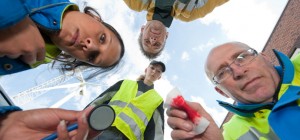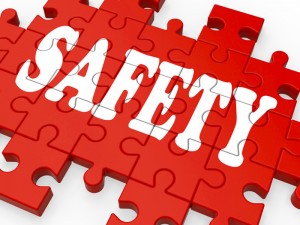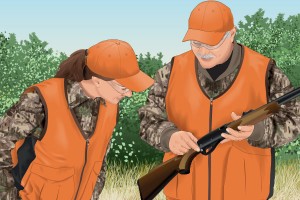- Helps employees take responsibility for lifestyle choices
- Educates workforce about hazards and opportunities for wellness
- Enhances employee productivity
- Reduces absences and idleness
- Reduces health care costs
- Shifts health care paradigm from treatment to prevention
Author: Randy
50 Common Signs and Symptoms of Stress
 1. Frequent headaches, jaw clenching or pain
1. Frequent headaches, jaw clenching or pain
2. Gritting, grinding teeth
3. Stuttering or stammering
4. Tremors, trembling of lips, hands
5. Neck ache, back pain, muscle spasms
6. Light headedness, faintness, dizziness
7. Ringing, buzzing or “popping sounds
8. Frequent blushing, sweating
9. Cold or sweaty hands, feet
10. Dry mouth, problems swallowing
11. Frequent colds, infections, herpes sores
12. Rashes, itching, hives, “goose bumps”
13. Unexplained or frequent “allergy” attacks
14. Heartburn, stomach pain, nausea
15. Excess belching, flatulence
16. Constipation, diarrhea, loss of control
17. Difficulty breathing, frequent sighing
18. Sudden attacks of life threatening panic
19. Chest pain, palpitations, rapid pulse
20. Frequent urination
21. Diminished sexual desire or performance
22. Excess anxiety, worry, guilt, nervousness
23. Increased anger, frustration, hostility
24. Depression, frequent or wild mood swings
25. Increased or decreased appetite
26. Insomnia, nightmares, disturbing dreams
27. Difficulty concentrating, racing thoughts
28. Trouble learning new information
29. Forgetfulness, disorganization, confusion
30. Difficulty in making decisions
31. Feeling overloaded or overwhelmed
32. Frequent crying spells or suicidal thoughts
33. Feelings of loneliness or worthlessness
34. Little interest in appearance, punctuality
35. Nervous habits, fidgeting, feet tapping
36. Increased frustration, irritability, edginess
37. Overreaction to petty annoyances
38. Increased number of minor accidents
39. Obsessive or compulsive behavior
40. Reduced work efficiency or productivity
41. Lies or excuses to cover up poor work
42. Rapid or mumbled speech
43. Excessive defensiveness or suspiciousness
44. Problems in communication, sharing
45. Social withdrawal and isolation
46. Constant tiredness, weakness, fatigue
47. Frequent use of over-the-counter drugs
48. Weight gain or loss without diet
49. Increased smoking, alcohol or drug use
50. Excessive gambling or impulse buying
via Commons Signs and Sympotons of Stress | The American Institute of Stress.
Sexual Harassment
 It is unlawful to harass a person (an applicant or employee) because of that person’s sex. Harassment can include “sexual harassment” or unwelcome sexual advances, requests for sexual favors, and other verbal or physical harassment of a sexual nature.
It is unlawful to harass a person (an applicant or employee) because of that person’s sex. Harassment can include “sexual harassment” or unwelcome sexual advances, requests for sexual favors, and other verbal or physical harassment of a sexual nature.
Harassment does not have to be of a sexual nature, however, and can include offensive remarks about a person’s sex. For example, it is illegal to harass a woman by making offensive comments about women in general.
Both victim and the harasser can be either a woman or a man, and the victim and harasser can be the same sex.
Although the law doesn’t prohibit simple teasing, offhand comments, or isolated incidents that are not very serious, harassment is illegal when it is so frequent or severe that it creates a hostile or offensive work environment or when it results in an adverse employment decision (such as the victim being fired or demoted).
The harasser can be the victim’s supervisor, a supervisor in another area, a co-worker, or someone who is not an employee of the employer, such as a client or customer.
via Sexual Harassment.
Healthy Habits Start at Home
![]()
 Help your child develop healthy habits early in life that will bring lifelong benefits. As you gain practical tips on helping your kids eat nutritious meals and enjoy a physically active lifestyle, be sure to apply these same behaviors to your own life. The best way to lead your child to a healthy lifestyle is to set a positive example yourself.
Help your child develop healthy habits early in life that will bring lifelong benefits. As you gain practical tips on helping your kids eat nutritious meals and enjoy a physically active lifestyle, be sure to apply these same behaviors to your own life. The best way to lead your child to a healthy lifestyle is to set a positive example yourself.
OSHA Announces New Injury Reporting Rules
 The Occupational Safety and Health Administration (OSHA) announced a final rule Sept. 11, 2014, revising the requirements for reporting work-related fatality, injury and illness information. The rule also updates the list of employers partially exempt from OSHA record-keeping requirements.
The Occupational Safety and Health Administration (OSHA) announced a final rule Sept. 11, 2014, revising the requirements for reporting work-related fatality, injury and illness information. The rule also updates the list of employers partially exempt from OSHA record-keeping requirements.
The current regulation requires employers to report all work-related fatalities and in-patient hospitalizations of three or more employees within eight hours of the event.
The new rule retains the requirement to report all fatalities to OSHA within eight hours but amends the regulation to require employers to report all work-related in-patient hospitalizations, as well as amputations and losses of an eye, to OSHA within 24 hours.
The reporting regulations affect all employers covered by OSHA, even those who are partially exempt from maintaining injury and illness records.
The changes go into effect Jan. 1, 2015, for workplaces under federal OSHA jurisdiction. Employers located in states that operate their own safety and health programs should check with their state plan for the implementation date of the new requirements.
Stay Safe Around Natural Gas
 If you suspect a natural gas leak: Leave the area immediately and go to a safe location.
If you suspect a natural gas leak: Leave the area immediately and go to a safe location.
Do not try to locate the source of the leak.
Do not do anything that could cause a spark and ignite the gas:
- Do not use electrical devices, such as light switches, telephones, or garage door openers
- Do not use an open flame, matches or lighters
- Do not start vehicles parked in the area
Do not try to shut off any natural gas valves.
From a safe location, call your Energy Company.
Do not re-enter the building or return to the area until an Energy Company employee says it’s safe.
Signs of Natural Gas Leak
- “Rotten egg” smell
- Dead or discolored vegetation in an otherwise green area
- Dirt or dust blowing from a hole in the ground
- Bubbling in wet or flooded areas
- Blowing or hissing sound
- Flames, if a leak has ignited
- Gas in transmission pipelines does not have odorant added, so signs of a pipeline leak may include all of the above except the rotten egg odor.
Safety and Health Management Systems
 What is a Safety and Health Program and where does it fit into my management system?
What is a Safety and Health Program and where does it fit into my management system?
If your team wants to reduce accidents, injuries, illnesses, and their related costs, everyone must place as much emphasis on safety and health issues as they place on other core management issues, such as production, sales, and quality control. To be most effective, safety and health must be balanced with, and incorporated into, the other core business processes.
“Safety First” may sound good, but in reality, safety should not be considered separately. Rather, it must become a basic value of your company. Change “Safety First” to “Safe production is our only standard.” This emphasizes the idea that it’s fine to produce as hard and as fast as possible, as long as it can be done safely.
Tree Stand Safety Tips
 Bowhunting can be fun but also cause severe injury and even death from falls while using tree stands. The National Bowhunter Education Foundation recommends the following safety tips to reduce the risk of hunting from elevated tree stands:
Bowhunting can be fun but also cause severe injury and even death from falls while using tree stands. The National Bowhunter Education Foundation recommends the following safety tips to reduce the risk of hunting from elevated tree stands:
- Practice with your stand at ground level, gradually going higher. Several Conservation Department shooting ranges and outdoor education centers have practice poles for free public use.
- Know the proper procedure for securing the stand to a tree and how to use the stand properly.
- Read the manufacturer’s warnings and instructions before each season.
- Use only stands that meet standards of the Treestand Manufacturer’s Association (TMA) rated for your weight and all gear or equipment you wear or have with you on the stand.
- Always use a fall arrest system that meets TMA standards, which includes a full-body harness rated for your weight and any gear you wear or attach to yourself.
- Have your fall arrest system attached to the tree from the moment you leave the ground, throughout the hunt and when you descend to the ground.
- Always position yourself so that you step down onto your tree stand to test its stability.
- Always use a haul line to raise and lower your gear, including unloaded firearms, bows and arrows.
via Tree Stand Safety | Missouri Department of Conservation.
Most Frequently Cited OSHA Standards
 The following were the top 10 most frequently cited standards in fiscal year 2013 (October 1, 2012 through September 30, 2013):
The following were the top 10 most frequently cited standards in fiscal year 2013 (October 1, 2012 through September 30, 2013):
- Fall protection, construction (29 CFR 1926.501)
- Hazard communication standard, general industry (29 CFR 1910.1200)
- Scaffolding, general requirements, construction (29 CFR 1926.451)
- Respiratory protection, general industry (29 CFR 1910.134)
- Electrical, wiring methods, components and equipment, general industry (29 CFR 1910.305)
- Powered industrial trucks, general industry (29 CFR 1910.178)
- Ladders, construction (29 CFR 1926.1053)
- Control of hazardous energy (lockout/tagout), general industry (29 CFR 1910.147)
- Electrical systems design, general requirements, general industry (29 CFR 1910.303)
- Machines, general requirements, general industry (29 CFR 1910.212)
via Compliance Assistance/Outreach | Most Frequently Cited Standards.
Firearms Safety | 10 Rules of Safe Gun Handling
 Firearms Safety — 10 Rules of Safe Gun Handling
Firearms Safety — 10 Rules of Safe Gun Handling
1. Always Keep The Muzzle Pointed In A Safe Direction
2. Firearms Should Be Unloaded When Not Actually In Use
3. Don’t Rely On Your Gun’s “Safety”
4. Be Sure Of Your Target And What’s Beyond It
5. Use Correct Ammunition
6. If Your Gun Fails To Fire When The Trigger Is Pulled, Handle With Care!
7. Always Wear Eye And Ear Protection When Shooting
8. Be Sure The Barrel Is Clear Of Obstructions Before Shooting
9. Don’t Alter Or Modify Your Gun, And Have Guns Serviced Regularly
10. Learn The Mechanical And Handling Characteristics Of The Firearm You Are Using

